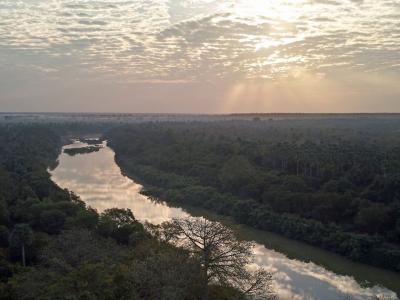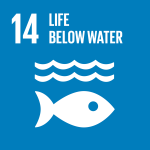Ecosystem services for water access and management in the Sahel

By Clotilde Goeman
The 9thWorld Water Forum (WWF), taking place in Dakar, Senegal, brings people from across the world together to discuss “water security for peace and development.” The forum focuses on four priorities: water security and sanitation, water for rural development, cooperation, and means and tools.
Maintaining and restoring forests, grasslands and wetlands are key interventions to reach the WWF priorities as they provide a large range of benefits such as regulating and recharging both ground and surface water as well as providing water quality benefits through filtering silt, sediments and pollutants. With climate change, communities in the Sahel are particularly vulnerable due to the changes in rainfall patterns and their restricted access to infrastructure for water access. Restoring and improved management of ecosystems can offer significant benefits.
The latest IPCC report lifted doubts, if any remained, about the dire consequences climate change will pose in the Sahel: reduced reliability of rainfalls, temperature increase above global average and increased risks and intensity of floods, droughts, invasive species and pests are counted among the likely scenarios. Pastoralists and communities relying on rain-fed agriculture are the most impacted, exposed to escalating and compounding risks, with very little technical and financial capacity to sustainably manage for these risks. Instead, short-term coping practices are adopted for immediate relief from these impacts, often with significant adverse environmental impacts, this includes encroachment on critical ecosystems in search for fuelwood or conversion of more fertile lands, the use of chemicals or the overextraction of water.
What the IPCC report also stresses is that adaptive solutions do exist. Hope shouldn’t be dropped but action must be taken quickly. UNDP’s Nature, Climate and Energy team has laid the groundwork over the last years to provide the most vulnerable people with sustainable practices, with an increasing focus on nature-based solutions, including ecosystem-based adaptation.
Nature-based solutions are often some of the most powerful and replicable solutions if properly designed and consistently applied. The restoration or maintenance of an ecosystem can have wide-ranging positive impacts, well beyond the areas of intervention, in particular in terms of water access and security. Multiple projects supported by UNDP’s Nature, Climate and Energy team recognize the need to prioritize these practices for a sustainable impact.
Solutions from the field
Under the Niger River Basin and Iullemeden-Taoudéni-Tanezrouft Aquifer System (NB-ITTAS) project, local communities and NGOs are supported to better manage and conserve the natural resources of the basin to better control floods, droughts and pollution, to reduce pressure on soils, forests and biodiversity, while improving livelihoods. On-the-ground activities are targeting key ecosystems in threatened aquatic habitats and wetlands, or mountain forests. With funding from the Global Environment Facility and support from UNDP, the project also works with the 11 partner governments to improve inter-state cooperation for the conservation of natural resources and ecosystems for improved and safer water access and extreme weather event protection.
In Senegal, the Strengthening the Management of the Niayes and Casamance Lands and Ecosystems in a Context of Climate Change project – funded by the GEF’s Least Developed Countries Fund (LDCF) – supported restoration and reforestation of more than 600 ha (including mangrove) to prevent erosion, improve water infiltration and prevent and reduce saltwater intrusion. These efforts were complemented by a guide on good practices for water use, to reduce the pressure on water resources in a climate change context.
In Burkina Faso, the Climate Resilience in the Nakanbé Basin project, recently approved by the GEF-LDCF, will introduce ecosystem-based adaptation practices to rehabilitate riverbanks and reduce soil erosion in five priority sub-catchments of the Nakanbé Basin. Practices for both water retention (reforestation, planting grass strips between fields to promote water conservation, ridging, contouring or bank terracing) and flood protection (digging soil ditches and water retention barriers) will be introduced to benefit local communities.
Key takeaways
Over years of implementation, UNDP’s Nature, Climate and Energy team has collected lessons learned on nature-based solutions for water management and access, and adjusted project design accordingly. Some of the key take-aways include:
- Conducting in-depth studies to avoid malpractices such as selecting exotic or invasive species that would threaten local species and ecosystems in the long-term. The social and environmental safeguards implemented by UNDP are paying particular attention to these aspects under its standard 1 on Biodiversity Conservation and Sustainable Natural Resource Management.
- Conducting extensive consultations and engaging with local communities from different ethnic groups and livelihoods to ensure the interventions are not adversely impacting vulnerable groups (ie. In terms of livelihoods, access to energy, access to natural resources). In addition to consulting beneficiaries during the project formulation phase following UNDP’s SES, UNDP-supported projects are conducting regular monitoring missions (including with government partners), or setting-up grievance redress mechanisms to enable communities to raise their concerns. Innovative digital reporting practices in the Niger Basin will also be implemented to enable remote and inaccessible communities to timely report on their progress and the challenges they face.
- The involvement of local and national authorities to ensure the enforcement of preservation regulations in the long-term. In Mali, the Programme Support for Climate Change Adaptation in the vulnerable regions of Mopti and Timbuktu has worked closely with mayors and other local authorities and partners to implement its activities in spite of the increasing insecurity in the region. This has enabled a higher level of trust and a strong ownership of the project by beneficiaries. In addition, the project has directly involved local communities for planting activities, giving them the tools and knowledge to scale-up the restauration activities.
- Ensuring or promoting the access to alternative or more resilient livelihoods for communities impacted by the adoption of protective measures. For instance, when forest logging for fuelwood or charcoal was a livelihood or a safety net in case agricultural yields fail, often for climate-related reasons (ie. droughts, floods, late rainy-season onset), alternative livelihoods need to be offered to avoid falling back into forest cutting at the end of the project. For instance, projects in Mali and Senegal introduced livelihoods for the transformation of products for value-addition, improving the access to water for market gardening, diversifying crops, maintenance of infrastructures, and other livelihoods activities.



